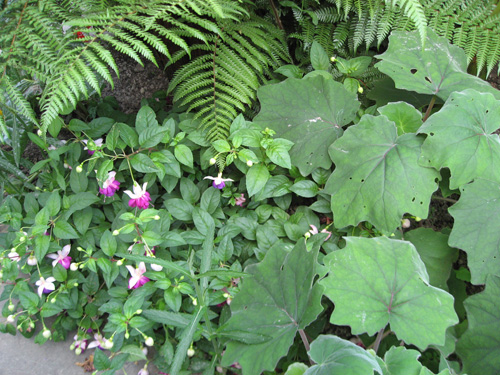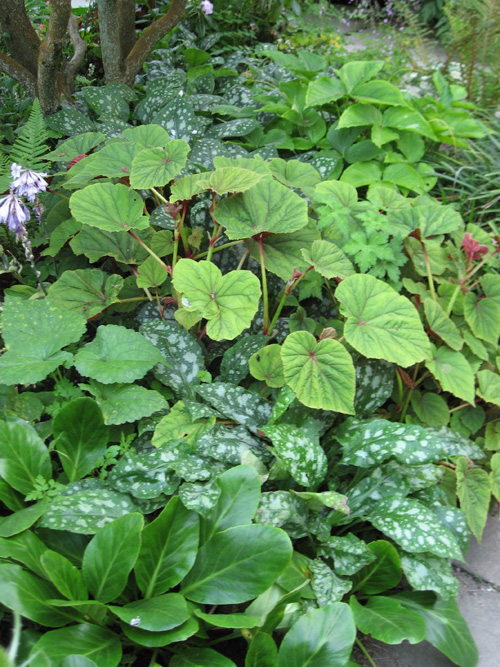Tip of the Week—2/09/09
Posted in Gardening Tips on February 9 2009, by Sonia Uyterhoeven
Under or Inter…Planting?
 Sonia Uyterhoeven is Gardener for Public Education at The New York Botanical Garden.
Sonia Uyterhoeven is Gardener for Public Education at The New York Botanical Garden.
What are all these prefixes that we see hanging around the word “planting” and what exactly do they mean?
 Sometimes a photograph is worth a thousand words. At right is an example of underplanting at Great Dixter in England, the legendary garden of the late Christopher Lloyd.
Sometimes a photograph is worth a thousand words. At right is an example of underplanting at Great Dixter in England, the legendary garden of the late Christopher Lloyd.
Every nook and cranny is filled with plants. Microclimates are naturally created in the garden as taller plants cast shade on shorter plants. At Great Dixter, this is an opportunity for tapestry and texture; fuchsia, begonia, and other shade-loving plants hug the ground beneath taller plants. In the photo, Rolanda petasitis (velvet groundsel) will eventually shoot up to six feet tall, above the fuchsia and fern below.
If you follow the design principles of working with shape, texture, and contrast when combining the foliage and flowers of plants, with a little bit of practice you will start creating beautiful vignettes in your garden.
Interplanting requires a little more knowledge of your plants and their growth habits. Allium (ornamental onion) have beautiful orbicular-shaped flowers, but their foliage is something to be desired. The plant starts off in grand fashion and then starts to yellow before the flower has opened. At Great Dixter, ornamental onions are interplanted with the mounding foliage of hardy geranium such as Geranium ‘Ann Thompson’ and the loose framework of Spiraea x bumalda (bumald spirea).
 A good example of interplanting is seen at left, where the building block approach of Fergus Garrett, Great Dixter’s head gardener, is apparent. The foundation of this garden scene is the Pulmonaria (lungwort) that you see weaving through the border. Layers of plants are then added to the mix.
A good example of interplanting is seen at left, where the building block approach of Fergus Garrett, Great Dixter’s head gardener, is apparent. The foundation of this garden scene is the Pulmonaria (lungwort) that you see weaving through the border. Layers of plants are then added to the mix.
The hardy begonia (Begonia grandis ssp. evansiana) and jack-in-the-pulpit (Arisaema triphyllum) have a tendency to stretch and rise above their companions, adding a new spatial dimension through graduated heights that give a tiered or layered look. Strong shapes, textures, and color create a dynamism that makes it appear as if the plants are skipping through the border. Understanding how plants occupy space is a key element in this design.


Enjoy your witty articles, have one comment on the spelling of Geranium ‘Anne Thomson’- no “p” please! Thomson is a Scots name.